 Here at Selfishgenie Publishing we use social media as a marketing tool. If you read our series of blogs on the subject (still available in the archive) you will see that it is cheap and quite effective if used well. However, there is a darker side to social media marketing and people are falling for it every day. Actually, there are two dark sides. The first is dark, the second is very dark. The plain dark is the way social media is used to capture your personal data, which is then sold to third parties so they can bombard you with advertising. We’re not talking about the usual clicking of the “agree” button for terms and conditions. That is just the way that social media sites make money by letting you use their platforms for free. If you don’t agree, you can’t use the platform. Seemples.  No, we mean the way memes are used to capture data. You may think it’s just a fun question for you to answer, but it isn’t. It is aimed at grabbing a little snippet of personal data from you that will be of use to someone in targeting their adverts. Not only that, but you even give them the address to which they can send the advert. I’ll give you an example. One meme that appears quite regularly is “Name something from your childhood that young people today wouldn’t understand.” Sounds harmless, doesn’t it? Just a bit of fun. But your answer puts you firmly into a specific age bracket. That tiny scrap of data can then be used to target you for adverts aimed at your age group. If you happen to be our age, it might be stairlifts, funeral plans or walk-in bathtubs.  And how do they get your address? It’s your social media username, which shows up every time you reply to one of these posts. That gives them access to your profile as well, which probably provides them with even more personal data. It also tells the person that posted the meme something else about you. It tells them you were gullible enough to respond to the meme. And if you were gullible enough to do that, you may be gullible enough to fall for an advert for a substandard, or even non-existent, product.  Other age-related questions are based around subjects such as music (a song or band name can give away the decade when you were a teenager), films, books, TV shows, the car in which you learnt to drive etc. So, what is the “very dark” side of these memes. It relates to cybercrime. It’s the questions that are aimed at trying to get hold of your passwords so that your accounts can be hacked. You may think I mean your bank accounts, Paypal etc, but I don’t. I mean your social media accounts, because many of these are used as the basis for scams of one sort or another. "You may think that none of your friends would be stupid enough to fall for a scam"  If I can make myself appear to be you, by posting on one of your social media accounts, then your friends may trust what has been posted. It also allows me to access the list of all your social media friends, which I can sell. You may think that none of your friends would be stupid enough to fall for a scam, but hundreds of thousands of people across the world, good, honest and above all intelligent people, have fallen for these scams. It only needs one of your hundreds of social media friends to fall victim for the scammer to win. So those sorts of posts will ask you about your first car, your first pet, your first school and a whole lot of similar things because those are the sorts of things that are used as passwords or as the answers to security questions. These also include you “pornstar” or “stripper” names, or even your secret agent name. eg “The last thing you ate and the name of your first pet is your secret agent name.” You wouldn’t tell someone your account number and password for your bank account, but you are happy to tell them the name of your first pet – which is almost as revealing. There are other ways of getting the account number and password, you’re just making things a bit easier for them when they try to hack your account, by providing the answers to the security questions or memorable information  So, other than the age-related memes, what others should you be on the lookout for? The most obvious ones are worded like this. “You are about to be attacked by a zombie. The last thing you bought is the weapon you must use to fight it. What will you use?” That’s quite an easy one to identify, because it relates directly to products. If you bought the thing you are going to use against this hypothetical zombie, then you’re likely to buy more of the same. How about this one. “It’s your best friend’s birthday today. The nearest thing to your right hand is what you will be giving them as a birthday present. What will they get?” Again, this is product related, because whatever you answer can then be used to target you for similar products. If you say “a plate of biscuits”, then you’ll be targeted for biscuit advertising (or, more likely, sweet things in general). You may also become a target for advertising for plus sized clothing or dieting aids.  An answer related to smoking products may result in you being targeted for nicotine replacement therapies, books on how to stop smoking or drugs to help you stop smoking (which may or may not work and may even be harmful to your health). OK, how about something a little bit different. “The last place you visited is where you will spend your honeymoon. Where will you go?” Whatever your answer, you will be targeted for advertising for similar destinations, cheap airline seats, hotels, etc. Now, if you don’t mind being targeted for advertising, then there’s nothing wrong with any of this. But if you’d rather spend your social media time actually socialising, rather than scrolling through adverts, you might do well to avoid responding to those memes.  You may think that your “advertising preferences”, which you have carefully selected on your favourite social media sites, will protect you against these adverts. You would be wrong. These simply tell the site’s owners (Facebook, Twitter, Insta et al) who they can direct adverts for certain products towards in order to maximise the number of clicks for the advertisers. They won’t prevent you from seeing advertising from other sources that are paying those same sites to “boost” a post or whatever term the site uses. Believe it or not, there is no way that you can actually prevent advertising from appearing on your social media pages. All you can do is tell the sites which products you’re not too unhappy seeing. You’ll see all the others anyway because they’re paying the social media site to blast the adverts out to anyone who has an account. But giving away your little bits of data allows those “blast it out” type of advertisers to refine their audience by targeting you personally, by age, gender, interests, purchasing habits, cultural tastes etc  And, when you ask yourself “How did they know that about me?”, the answer will be “Because you told them.” Many of the products will be genuine but remember what we said about targeting the gullible. That’s how scams work, because they’ll try to get your money by selling products they have no intention of ever delivering. How do you know they actually own that holiday cottage or Spanish villa they are offering to rent you? They will also try to sell you products which may not conform to safety standards. You have no idea where the sellers of the products may be based, so you have no way of finding out if they are reputable. There are ways of countering this form of data snatching and that is to tell lies. If the data that is captured is inaccurate it becomes useless, because the advertiser is directing their adverts towards people who won’t buy their product or service (whether it’s real or a fake). That means they are wasting their money and will have to find some other way of identifying their target audience. They will find that way, of course, but there’s no need for you to collaborate with them in their search. “Does this tell somebody something about me that they didn’t, or couldn’t, otherwise know?”  There is one thing we can all do when we read these memes. It is to ask ourselves one simple question: “Does this tell somebody something about me that they didn’t, or couldn’t, otherwise know?” If the answer is yes, you are making an informed choice about whether or not to post your answer. You don’t have to. It isn’t compulsory. And if you choose not to answer, you will reduce the amount of advertising (real or scam) that appears on your social media feeds. For the darker forms of data capture, the ones that are aimed at finding out the answers to security questions, then the questions is much simpler. “If I answer this question, could it compromise the security of any of my accounts?” Again, telling lies in answer to the questions makes the information useless and it will frustrate the scammers, which is actually a result for us good guys. One thing of which we can be sure is that the people who post these memes aren’t acting in your best interests. If they were, they wouldn’t be hiding behind fake user IDs and asking seemingly innocent questions in order to grab your personal data. It’s up to you whether you co-operate with them, but we recommend you don’t. If you have enjoyed reading this blog, or found it informative, why not make sure you don't miss future editions by signing up for our newsletter. We promise not to spam you, or to sell your data to scammers. Just click on the button below.
0 Comments
Week 12 - “Stopping advertising to save money is like stopping your watch to save time.” *  Marketing pioneer John Wannamaker Marketing pioneer John Wannamaker There will come a time when you, as an Indie author, are tempted to spend some of your hard-earned money on advertising your book, but is this a wise thing to do? That is the subject of this week’s blog. The marketing pioneer John Wannamaker (1838-1922) is famous for saying “Half the money I spend on advertising is wasted; the trouble is I don't know which half.” That quote resonates especially with small businesses and people like Indie authors, because they can’t afford to waste any money, let alone half of what they spend on anything. But we have to remember that times were different back in Wannamaker’s day. 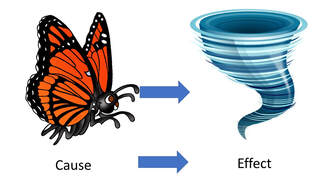 True, it is sometimes difficult to establish cause and effect. If you launch an advertising campaign and you then sell a book, is it because of a response to the advert, or because the purchaser had the book recommended to them by a friend? But that is just a single purchase. If sales increase over the entire period of an advertising campaign, it is far easier to establish cause and effect. "it is sometimes difficult to establish cause and effect" We also have to consider the metrics (measurements) available in Wannamaker’s day. They were fairly primitive; basically just money spent, newspaper and magazine circulation figures, and sales achieved. Today, however, on-line advertisers can provide users with a wide range of information regarding the performance of their adverts.  For example, Facebook Ads offer these measurements: - Reach – how many people saw the advert while they were using Facebook. - Total post engagement – The number of actions taken when the ad was viewed (likes, shares, link clicks). - Clicks – How many people clicked on a link in the ad. - Likes – how many likes the post earned. Technically speaking, Facebook doesn’t call this an “advertisement”, it is just “boosting your post”, but it is the same thing. Click on Facebook’s “Ad Centre” and you get exactly the same range of posting options, but they charge you a lot more – a £100 minimum budget compared to a £10 minimum for boosting your post. "If your ad is being seen by a lot of people, but you aren’t getting many engagements, something is wrong" If you can see how much “reach” you get, you can compare that to the number of engagements you got (clicks, likes and shares). If your ad is being seen by a lot of people, but you aren’t getting many engagements, something is wrong with the ad or its targeting. If you know how many clicks you got, you can then compare that with sales made and make a calculation of conversions from clicks to sales – and therefore work out how much each click cost you and earned you, eg, if your ad cost £10 and you got 1,000 clicks, each click cost you a penny. If you then made 10 sales, each sale cost you £1, with a conversion rate of 1 sale per 100 clicks. If you made £3 from each sale, it means you made £20 profit on the campaign.  Trying to disentangle multiple campaigns. Trying to disentangle multiple campaigns. The problem comes when you mount multiple campaigns running concurrently, using different advertising platforms. Although you can see which advertiser is getting you the most clicks for your money, there is no way to work out which clicks are generating the sales. You may be getting 1,000 clicks a day from an ad on Facebook, but you may be getting 10,000 clicks from an ad on Google. But if you got a total 10 sales from the two campaigns, you won’t know which ad on which platform generated the most sales. You are forced into assuming that Google is delivering the better results because they generated more clicks - but assumptions can be wrong. For this reason, we at Selfishgenie Publishing only advertise each of our books on one platform at a time, so we can be sure which adverts are generating our sales. That is also our recommendation for you.  We then compare advertising platforms to decide where to spend our money next time. We don’t necessarily ignore a platform, but we may reduce our spending on one and increase it on another. We are also able to compare budget size to results. For example, doubling the budget for an ad campaign might double sales, but it might also treble them or quadruple them – or have no effect at all. "Advertising a bad book will never lead to a profit" Throwing money into advertising can work. On all the social media platforms we discuss, the more you spend, the more people who will see your advert which means more potential buyers. But be very sure about the quality of your product. Advertising a bad book will never lead to a profit. Money saving tip - if you have published a series, advertising the series is cheaper than advertising each individual title. But you have to make sure that the series is properly set up on Amazon so that you can link to it. Consult the KDP website on how to do that. 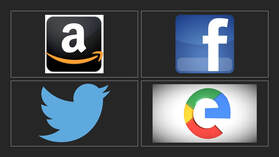 When it comes to social media advertising, we have used four platforms: Facebook, Amazon, Google and Twitter (we treat Google and Amazon as social media for these purposes, even though they aren’t). Some of them are better than others for producing results and why that should be comes from the discussion we had in earlier blogs about audience targeting. Google has by far the largest “reach” of all the platforms. An incredible 10 billion Google searches are made each month. It is used by more people per hour and in more countries than any other platform on the internet. But that doesn’t mean that it’s the best place for us to advertise. Facebook allows far better targeting of audiences, which means that, although fewer people will see our advertisement, more of them will be the people that our books are aimed at. But we have to also consider age profiles in terms of their use of social media. Older people prefer Facebook to Twitter, whereas it’s the reverse for younger readers. So, although Twitter may not be as good an advertising platform as Facebook in general terms, it may be better for us than Facebook if a book is aimed at younger audiences.  As you can see, choosing the place to spend your money is neither an easy nor a quick decision. In terms of rankings for advertising, this blog rated the following platforms in terms of their number of users, genders and age demographics: 1. Facebook, both genders, 18-65 2. Twitter, both genders, 18 -49 3. Instagram, both genders, 18-64 4. Pinterest, women, 18-64 5. Linkedin, both genders 25-64 The principal criteria used for ranking, however, is number of users.  Numbers of users doesn’t tell the whole story, however. The ability to refine target groups is one of the most important considerations in advertising. It’s called market “segmentation”, being able to break a potential audience down the way an orange can be divided into segments, so that you only direct your advertising to the segment(s) that are most likely to be receptive. The ability to reach over 2 billion users with Facebook isn’t much good if most of them don’t read books. Because it is the book readers that you want to reach. So, I have done a bit more work to show you what each platform is able to provide. Targeting Facebook Google Amazon Twitter Region/country Yes Yes Yes - Note 1 Yes Gender Yes No No Yes Interests (eg science) Yes No No Yes Use of Keywords Yes Yes Yes - Note 2 Yes Write your own ad or post Yes Yes No - Note 3 Yes Other Note 4 Notes:
 Twitter posts get their highest visibility for only 24 minutes after posting, whereas Facebook posts remain most visible for 3 hours after posting and this visibility remains true for advertising, 75% of all the people who will see a Twitter ad will see it in the first 3 hours, whereas 75% of all those who will see a Facebook ad will see it during the first 5 hours. This greater longevity for Facebook means that you cover longer time periods each day. If you post at midday and one of your targeted readers doesn’t log into Facebook until 4 pm, it is quite likely that they will still see your ad. But on Twitter it is less likely. You may think I’m pointing you towards Facebook, but I’m not. There are reasons for choosing Facebook over Twitter and reasons for choosing Twitter over Facebook. If your target audience is older, Facebook is the place to spend your money. If they are younger, then its Twitter. You will notice that I haven’t mentioned Instagram, Pinterest or Linkedin much. That’s because they aren’t platforms with which we have much experience. Certainly, in terms of audience rankings, they fall behind Facebook and Twitter, but we also know that, in Instagram’s case at least, they are more used by younger audiences. So, where does that leave us?  Basically, with a lot of decision making. First of all, it is no use advertising unless you analyse the data that is collected during your campaign. If you aren’t getting much engagement from your ad, these may be the reasons:
If you are getting engagement but few sales, then these may be the reasons:
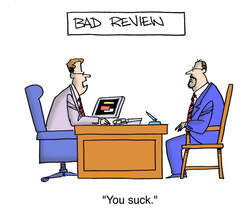 The only one of those things that you can’t fix is the last one. Actually, there is something you can do about that last one. You can “unpublish” the book. It isn’t selling and it isn’t helping you, but it may be affecting the sales of other titles, or it may affect the sales of future books. There is nothing you can do about the reviews themselves. If you have 100 good reviews (4 and 5 star) and only a couple of bad ones, then the bad ones don’t really matter. But if you have 100 bad reviews but only a couple of good ones, then you have a problem. If you unpublish the book, it is as though it never existed (except for those few people who did read it). You can start afresh with the next book. But don’t try to republish under a different title or pen name to fool the readers. If a previous reader buys it and spots what you’ve done, they will complain to the retailer and that could get you barred from their site. 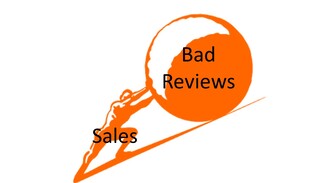 Advertising does work; if it didn’t businesses wouldn’t spend so much money on it. But we also know, from the adverts we see on TV, that there are good adverts and bad adverts and a bad advert is a waste of money. Sometimes, however, it isn’t always easy to see the direct success of an advertising campaign. I’ll give you an example. We recently ran an advert for Operation Absolom, the first book in Robert Cubitt’s “Carter’s Commandos” series. The campaign did alright but didn’t set the world on fire in terms of results; it covered its costs and returned a small profit. However, a couple of days later we noticed that sales started to increase for book 2 in the series, then book 3 and finally book 4. By advertising the first book, we had created some new fans who read the rest of the series and, hopefully, will now also buy book 5, which has now been released. The end result, measured over a longer time period, was a much higher profit on the campaign. This delayed reaction is something to consider if you are the author of a series of books. We’ve discussed “content” before, but it is an important subject, especially if you have to create your own content to support your social media marketing, so next week we’re returning to that topic. * Henry Ford If you have enjoyed this blog and found it informative, then be sure not to miss any future editions. Sign up to receive our newsletter by clicking the button below. |
AuthorThis blog is compiled and curated by the Selfishgenie publishing team. Archives
June 2025
|
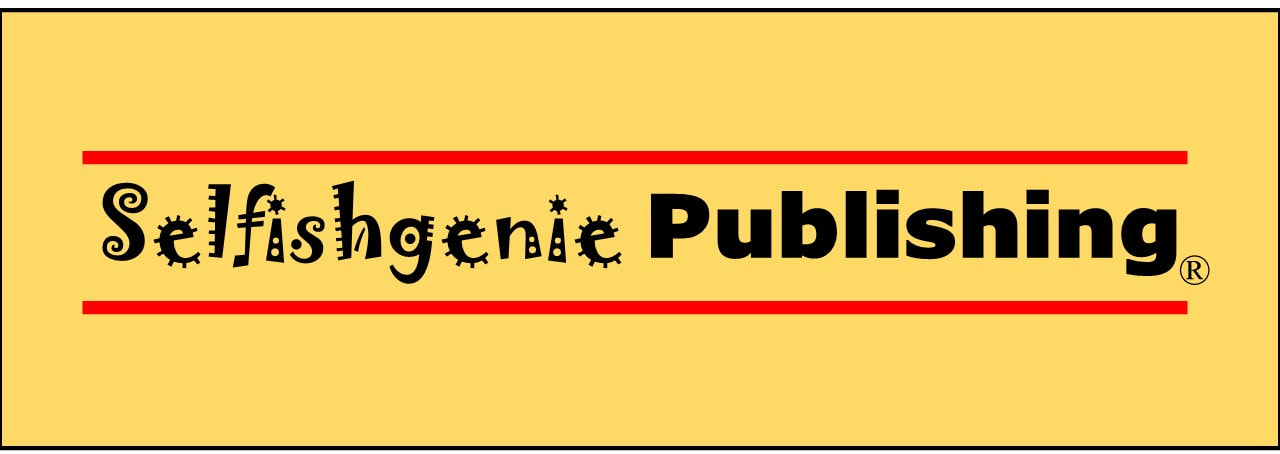
 RSS Feed
RSS Feed